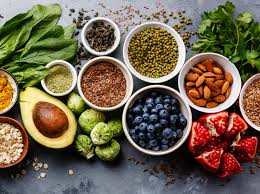By Ryan Cezar Malaluan
Matcha has taken the health and wellness world by storm—and for good reason. This vibrant green tea powder isn’t just a trendy beverage; it’s a nutrient-dense superfood packed with antioxidants, energy-boosting compounds, and longevity-enhancing properties.
Unlike coffee, which can cause energy crashes and jitters, matcha provides a smooth, sustained focus while supporting overall well-being. But what makes matcha truly special? In this guide, we’ll explore the science-backed benefits of matcha and how you can easily incorporate it into your daily routine for better energy, focus, and health.
What Is Matcha?
Matcha is a finely ground green tea powder made from specially cultivated tea leaves. Unlike traditional green tea—where you steep the leaves and discard them—matcha allows you to consume the entire leaf, delivering a concentrated dose of nutrients and antioxidants.
Quick Facts About Matcha:
- Origin: Japan (primarily Uji and Nishio, known for producing the highest-quality matcha)
- Processing: Shade-grown, hand-picked, and stone-ground to preserve nutrients
- Nutrient Density: 10x more antioxidants than regular green tea
- Taste Profile: Smooth, earthy, slightly sweet
For centuries, Buddhist monks have relied on matcha for meditation and sustained focus, thanks to its unique combination of L-theanine and natural caffeine. This balance promotes a calm, alert state of mind, making matcha a powerful tool for both mental clarity and relaxation.
The Science-Backed Benefits of Matcha
What makes matcha a true superfood? Its unique blend of antioxidants, amino acids, and natural caffeine plays a crucial role in enhancing both mental and physical well-being.
1. Sustained Energy & Focus—Without the Jitters
Unlike coffee, which can spike cortisol and lead to energy crashes, matcha provides a smooth, sustained energy boost thanks to its unique combination of caffeine and L-theanine.
Scientific Insight: A 2017 study in Nutrients found that L-theanine in matcha enhances cognitive function and reduces stress, making it ideal for work, studying, or meditation.
How It Works:
- Caffeine – Increases alertness without overstimulation
- L-Theanine – Promotes calm focus and prevents caffeine crashes
Learn more about the art of preparing matcha for the best results.
2. Packed with Antioxidants for Longevity & Immunity
Matcha contains one of the highest antioxidant levels of any superfood, particularly EGCG (epigallocatechin gallate), a catechin known for its powerful disease-fighting and anti-aging properties.
Key Health Benefits:
- Combats free radicals by reducing oxidative stress, slowing aging
- Boosts immune function by enhancing white blood cell activity
- Protects heart health by lowering LDL cholesterol and improving circulation
Scientific Insight: Research published in the Journal of Functional Foods (2018) found that EGCG in matcha reduces inflammation and helps prevent chronic diseases.
3. Supports Weight Management & Metabolism
Matcha is a natural fat-burning powerhouse, making it a great addition to any weight management routine.
Scientific Insight: A 2010 study in The American Journal of Clinical Nutrition found that catechins in matcha can increase fat burning by up to 17% during exercise.
How It Works:
- Increases thermogenesis, leading to higher calorie burning
- Enhances fat oxidation, helping the body burn fat efficiently
- Balances blood sugar, supporting a healthy metabolism
Discover more about the metabolism-boosting benefits of matcha and how it supports weight loss.
4. Natural Detoxification for a Healthier Body
Matcha is rich in chlorophyll, a powerful natural detoxifier that helps eliminate toxins and heavy metals from the body.
Detox Benefits:
- Supports liver function by aiding in toxin breakdown and removal
- Flushes heavy metals, helping rid the body of harmful substances
- Improves digestion, promoting gut health and reducing bloating
How to Incorporate Matcha into Your Daily Routine
Adding matcha to your lifestyle is simple and delicious. Whether you enjoy it as a traditional tea, a creamy latte, or blended into recipes, matcha is a versatile superfood that can easily fit into your routine.
1. Traditional Matcha Tea
The purest way to enjoy matcha, this method delivers maximum nutrients and antioxidants.
How to Make It:
- Sift 1 teaspoon of matcha powder into a bowl.
- Add 2 ounces of hot water (not boiling—about 175°F / 80°C).
- Whisk using a bamboo whisk until frothy.
- Enjoy as a smooth, earthy tea.
2. Matcha Latte (Best Coffee Alternative!)
A creamy, energizing alternative to coffee—without the jitters.
How to Make It:
- Blend 1 teaspoon of matcha powder with 6-8 ounces of warm milk (almond, oat, or dairy).
- Add honey or maple syrup for natural sweetness.
- Froth using a milk frother for a café-style texture.
3. Matcha Smoothies & Energy Snacks
Boost your morning routine or post-workout snack with a matcha green smoothie.
Matcha Green Smoothie Recipe:
- 1 teaspoon matcha powder
- 1 banana
- 1 cup almond milk
- 1 tablespoon chia seeds
Blend and enjoy.
4. Cooking with Matcha
Matcha isn’t just for drinks—you can infuse its benefits into meals and snacks.
- Add to pancakes, oatmeal, energy balls, or yogurt.
- Bake into cookies, muffins, or cakes for a nutrient boost.
- Sprinkle over smoothie bowls for an extra dose of antioxidants.
How to Choose High-Quality Matcha
Not all matcha is created equal. To maximize its health benefits and flavor, choose the right grade for your needs.
Premium-Grade Matcha (Best for Drinking)
Ideal for traditional tea and lattes, this is the highest-quality matcha available.
- Vibrant, bright green color (not dull or yellowish)
- Smooth, fine texture (never gritty)
- No additives, sugar, or artificial ingredients
- Naturally sweet and umami-rich flavor
Culinary-Grade Matcha (Best for Recipes & Smoothies)
A more affordable option, perfect for baking, smoothies, and cooking.
- Slightly bitter, stronger taste
- Works well in lattes, desserts, and savory dishes
- Best for mixing with other ingredients
How to Spot Low-Quality Matcha
Avoid matcha that lacks freshness, purity, or color vibrancy.
- Dull, brownish-green color = poor quality, old, or improperly processed
- Gritty or clumpy texture = not finely ground
- Added sweeteners or artificial flavors = not pure matcha
Final Thoughts: Why Matcha Deserves a Spot in Your Daily Routine
Matcha isn’t just a passing health trend—it’s a science-backed superfood with incredible benefits for energy, focus, and longevity. Unlike coffee, matcha delivers a smooth, sustained energy boost without crashes or jitters. Plus, it’s packed with antioxidants, metabolism-boosting compounds, and detoxifying nutrients that support long-term health.
Ready to Experience the Power of Matcha?
- Choose high-quality, pure matcha for the best taste and benefits
- Enjoy it in tea, lattes, smoothies, or recipes—it’s incredibly versatile
- Feel the difference in your energy, focus, and overall well-being
Make the switch from coffee to matcha and experience clean energy, mental clarity, and lasting wellness—one sip at a time.
READ MORE : How Technology Improves the Experience





